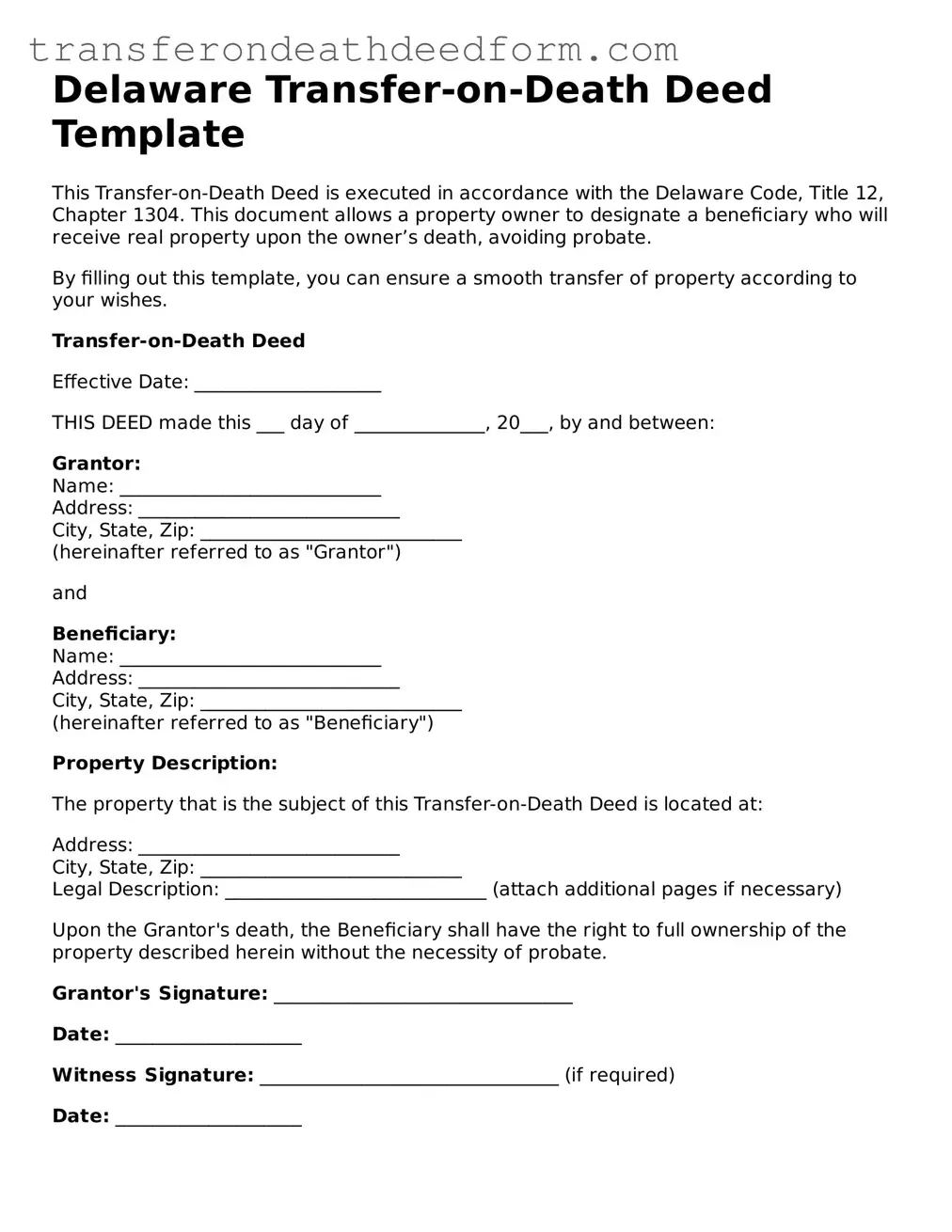Delaware Transfer-on-Death Deed Template
This Transfer-on-Death Deed is executed in accordance with the Delaware Code, Title 12, Chapter 1304. This document allows a property owner to designate a beneficiary who will receive real property upon the owner’s death, avoiding probate.
By filling out this template, you can ensure a smooth transfer of property according to your wishes.
Transfer-on-Death Deed
Effective Date: ____________________
THIS DEED made this ___ day of ______________, 20___, by and between:
Grantor:
Name: ____________________________
Address: ____________________________
City, State, Zip: ____________________________
(hereinafter referred to as "Grantor")
and
Beneficiary:
Name: ____________________________
Address: ____________________________
City, State, Zip: ____________________________
(hereinafter referred to as "Beneficiary")
Property Description:
The property that is the subject of this Transfer-on-Death Deed is located at:
Address: ____________________________
City, State, Zip: ____________________________
Legal Description: ____________________________ (attach additional pages if necessary)
Upon the Grantor's death, the Beneficiary shall have the right to full ownership of the property described herein without the necessity of probate.
Grantor's Signature: ________________________________
Date: ____________________
Witness Signature: ________________________________ (if required)
Date: ____________________
Notary Public:
State of Delaware
County of ____________________
The foregoing instrument was acknowledged before me this ___ day of ______________, 20___, by ____________________________ (name of Grantor).
Notary Signature: ________________________________
My Commission Expires: ____________________
This document must be recorded in the appropriate county Recorder's Office within 90 days of the death of the Grantor to ensure the transfer is valid.
Additional Information:
- Consider consulting an attorney to understand the implications of this deed.
- Ensure that the deed complies with any additional state requirements.
- Provide copies to the Beneficiary and retain a copy for your records.
